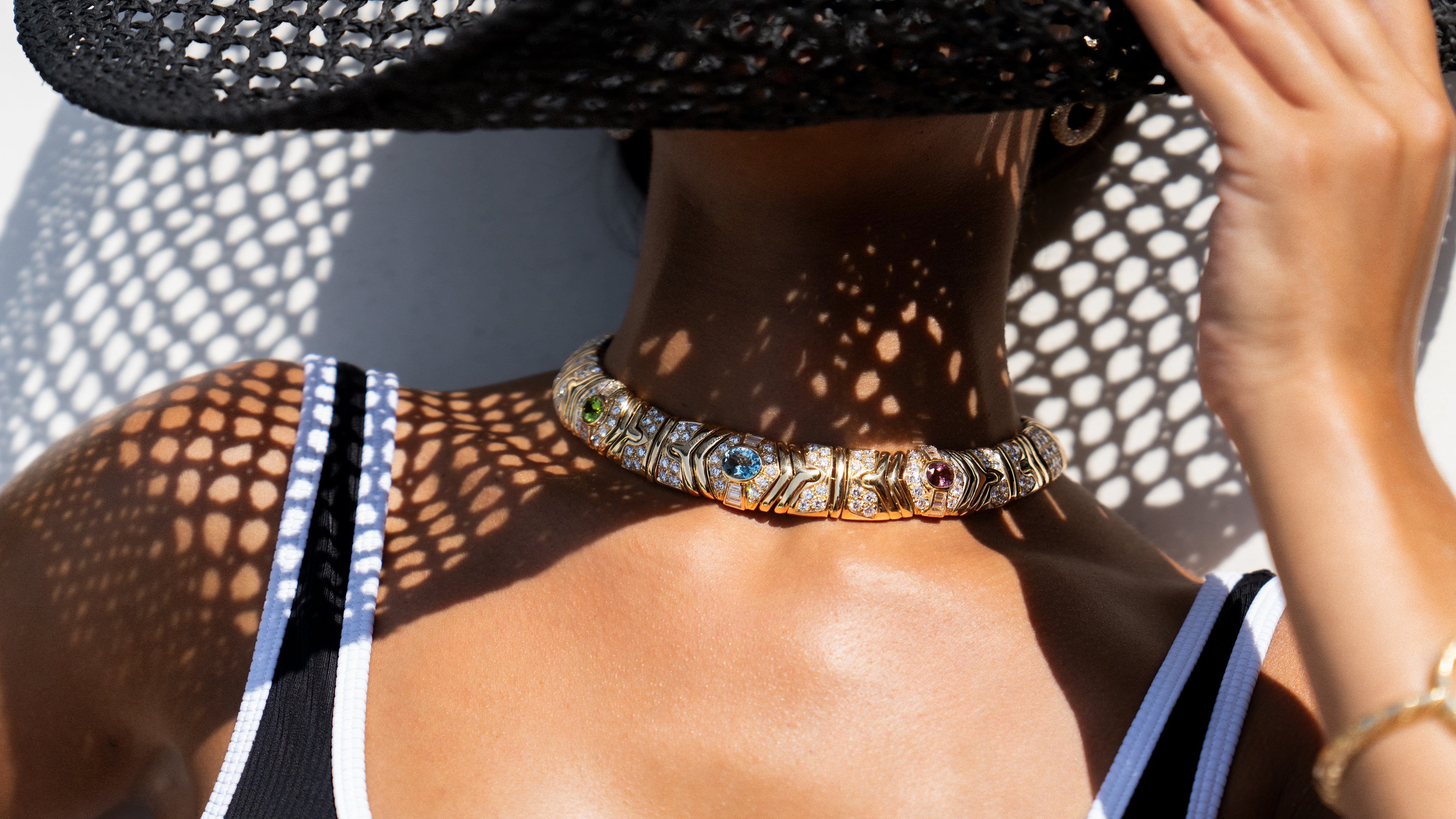Georg Jensen
From sculptor to master silversmith, Scandinavian designer Georg Jensen was an artist at heart who created works that receive heralds to this day for their elegant style and expert craftsmanship.
Some Early History
The world-renowned Danish silversmith, Georg Jensen, got his start in 1866 in the town of Radved, a rural factory town north of Copenhagen, Denmark. His first love was sculpting, a talent he developed by shaping the blue clay he found in a nearby marsh into small figures inspired by nature.
His artistic abilities were encouraged by his family, and at the age of 14, they moved to Copenhagen. Georg obtained an apprenticeship with a goldsmith. On his days off, Jensen studied at a technical school to get additional training. He returned to his first love, and at the age of 25, graduated from the Royal Academy of Art in Copenhagen, where he had studied sculpture.
Challenging Times
Personal tragedy struck with the death of his wife in 1897. Left with two small sons and unable to make a living as a sculptor, Jensen accepted a travel grant by the Danish Academy. He spent two years touring French and Italian art centers, exposing him to the Art Nouveau style in which beauty and utility came together to create the whole. The new wave of art was a backlash caused by the mass-produced pieces generated by the industrial revolution.
Jensen decided to try his hand at jewelry, creating his art in a wearable form. In 1899, he designed his first piece, a belt buckle crafted of silver and gilt entitled "Adam and Eve."
Two years later, he took up his work as a silversmith and designer with the master, Mogens Ballin.
A New Venture
In 1904, Jensen rented a tiny room at the heart of Copenhagen and began his silver business. Exhibiting at the Museum of Decorative Art in Copenhagen was the boost he needed, and the demand for his work began to grow.
In the early years, Jensen created almost all jewelry, because he couldn't afford the amount of silver required to make flatware. It was at this time that "Jensen style" was born. His jewelry was crafted in silver and incorporated natural gemstones such as amber, malachite, opal and moonstone. The pieces were fashioned into rings, brooches, necklaces, bracelets, and earrings and targeted middle-class consumers. Hatpins were especially popular. Much like his earliest efforts, the jewelry Jensen created featured nature-inspired motifs and took the appearance of tiny sculptures. Refusing at this point to mass-produce his jewelry, Jensen enjoyed much success.
All of Jensen's sales came from his workshop. The pieces resided in a drawer or cupboard, and it is from these he would offer his items for sale. He was often spotted eating his lunch while sketching a new design on a bit of newspaper left by another café patron.
Creative Collaborations
In 1906, Jensen created "Continental," his first complete set of flatware, a pattern that continues to be popular to this day. His serving pieces were individual works of art that were a hit with an ever-widening audience.
Georg Jensen believed in collaborating with other artists to master his creations, and he gave them credit for their efforts. As a result, he attracted some of the region's most talented artists. Christian Mohl Hansen collaborated on the dove brooch, a motif used many times by Jensen and a popular item to this day. Another critical collaborator was Johan Rohde, an artist who was a polar opposite of Jensen. The romantic Jensen and pragmatic Rohde created an ideal match-up of talents. It was Rohde who came up with the flatware pattern known as "Acorn," one of the most notable designs in the firm's long history.
A Growing Family and a Growing Demand
Jensen married again, and his new wife's family was brought into the business to help meet the growing demand. His youngest brother-in-law, Harald Nielsen, a would-be painter, found his calling as a draftsman for the silversmiths. As it turned out, Nielsen was a talented genius at his newfound craft, and he was responsible for many of its enduring patterns. When Georg Jensen died in 1935, it was Nielsen who followed him as the creative visionary for the firm. He remained with the company, celebrating his 60th anniversary in 1969.
Considered the peak of Jensen's work, these ten years are the ones that brought him most of the world fame he achieved. In 1916, the company officially became Georg Jensen Silversmith Ltd. Jensen is credited as being the first silver maker to profit from the manufacture of modern silver.
Following the successful launch of its store in London in 1921, Jensen opened shop in New York City in 1924. Sales were phenomenal from the start, particularly with the cream of New York society.
Jensen Style and Legacy
Over the years, the company has continued to be driven by the principles of its founder. Georg Jensen lives on in jewelry that reflects his passion for beautifully sculpted designs and uncompromising quality.
Early jewelry pieces featured flowers, birds, and other animals. Jensen's technique was to hammer the silver to create a pebbled surface and then oxidize the metal to give depth to his designs. Semi-precious stones accented his works. Occasionally, a piece would consist of 18K gold, but for the most part, silver was the metal of choice. It wasn't until 1833 that Hensesn dinnerware began employing sterling silver.
From the dawn of its heyday, Jensen style has embodied the style of the Art Nouveau period, infused with a distinctive vibrancy that resonates to this day. Signature motifs such as floral bouquets and bunches of grapes alongside the structural elements enhance the sensuous line work. The result is a celebration of nature that is both beguiling and timeless.
Awards
- 1925: Received the Grand Prix at the Paris World's Fair
- 1929: Won the Grand Prix at the World's Fair in Barcelona
- 1935: Awarded the Grand Prix at the World's Fair in Brussels
